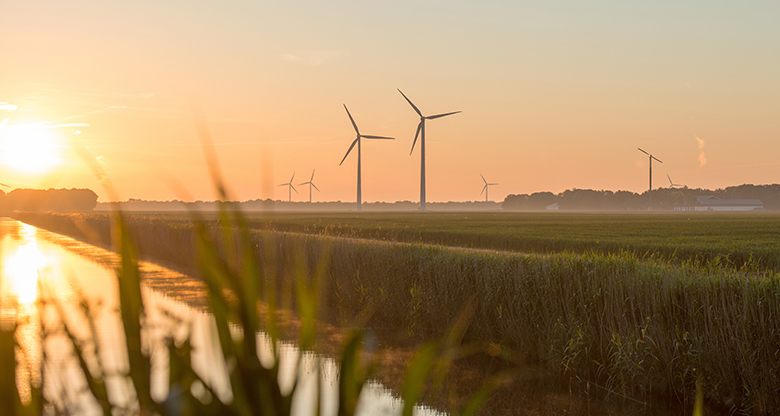The past year has seen a rapid acceleration in the growth of environmental, social and governance (ESG) investing. Coupled with that is an increasing desire and demand by businesses and governments for ways to build a more sustainable future.
Banks play a crucial role in helping their clients transition to a low-carbon future, particularly in how and where they allocate funds.
In response to this heightened demand, CommBank has expanded its ESG and sustainability expertise and has created a dedicated Sustainable Finance and ESG team to work across the business.
Its mission is to educate frontline bankers so that they can better support clients along their ESG path and to build innovative products – from green bonds to sustainability-linked loans (SLL) – to meet client needs.
The team is led by Charles Davis, Managing Director of Sustainable Finance and ESG, and includes recent hires Blathnaid Byrne and Camille Wynter.
Byrne was initially group treasurer, and more recently head of strategic financing, decentralised energy at AGL, while Wynter previously worked for AMP Capital in the Sustainable Investment Team where she was responsible for company board engagement and proxy voting across Australian equities.
At a recent presentation, the team discussed the pace of the changing ESG landscape and how it was impacting client strategies and needs.
“I think it’s only a matter of time before every single conversation with clients encompasses some level of discussion about ESG or sustainability,” said Wynter.
The transition journey
The conversation starts with an overview of where the client is on its transition to a low-carbon future.
“We recognise that everybody is at a different stage and everybody has a different journey and speed,” said Davis. “We talk with clients to truly understand where they are from an ESG perspective. Then we look at their transition plans going forward and we work things through to see if we consider those plans reasonable and achievable.”
He said many clients are having these discussions for the first time. It’s a long journey and clients that don’t have robust ESG plans in place are advised that is a barrier to securing finance.
“We need to tell them this is where the world is heading and it is important that you take it seriously,” said Byrne, director of sustainable finance.
For those clients who are in a position to move forward, Byrne said it’s important to consider matters through their lens. “What’s their strategy? How can we support that? What sort of product can we come up with that shows they are being innovative in their thinking?”
One of the most ground-breaking loans signed to date was the Wesfarmers Sustainability Linked Loan signed early last year because it set social as well as environmental metrics. Green bonds and other green-labelled issuances are increasingly popular and broaden the opportunity for issuers or borrowers to participate in the green, social, sustainability (GSS) market.
An SLL ties bank finance to ambitious and measurable ESG metrics. There’s a reward or penalty embedded in the instrument to ensure the borrower strives to achieve those metrics.
The purpose is to use capital to incentivise clients to lift their ESG performance.
Business-wide commitment
As companies move to increase their ESG and sustainability activity, the risk all parties want to avoid is green washing – when a company seeks funding for a green project but another part of its business is not meeting ESG targets.
Businesses need to demonstrate a whole-of-company commitment and investors will do their due diligence to ensure that what they’re investing in is true to the green label.
One CommBank client is currently converting all its existing finance to a sustainability-linked structure.
“It shows there’s a lot that can be done with specific products,” says Maddie Harmer, associate, sustainable finance and ESG at CommBank. “We’re working on that transaction with a few other banks. One bank is working on the sustainability targets, one on the documentation, one on the sustainability-linked framework.”
A syndicate of banks is common practice with some of the larger deals and demonstrates the collective business purpose to transition to a low carbon economy.
CommBank’s Group Executive of Institutional Banking & Markets, Andrew Hinchliff, recently noted that the conversation around ESG had moved from merely mitigating risk to unlocking extraordinary opportunities.
He said the move to sustainable business models would generate trillions of dollars in economic opportunities driven by upgrades to the infrastructure and technology needed to produce, transport and consume energy in a sustainable way.
At CommBank, we recognise the important role we play in the transition to a low-carbon future. Please discuss with your relationship manager how our new ESG team can help you.


